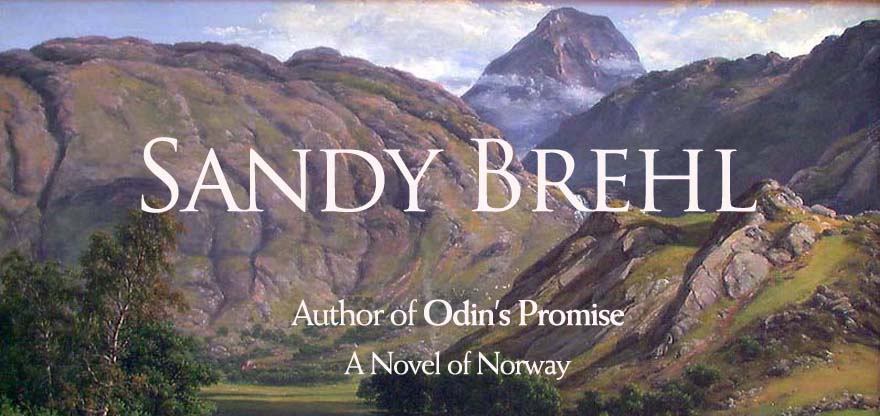
In the classroom my goal is to help students become partners with the author. I stress the value of noticing voice, word choice, setting, and details. I encourage and model connecting text with our own lives and the larger world. I insist that the “best readers” aren’t ones who can reach the last page first or read the most words per minute, although fluency is an essential tool. Just as speed kills on the road, it can kill the beauty, depth, and nuance in reading. And in life.
Carl Honore` speaks to that lifestyle in this TED talk: In Praise of Slowness.
These days, few if any classrooms emphasize slowing down. In fact, the opposite is demanded, right along side the demands for arbitrary and high stakes testing with bubble-choice responses and timed tests. Even when teachers, parents, and administrators believe otherwise, mandated instruction all too often limits time for reflection and discussion.

I’ve been working on study questions for ODIN’S PROMISE. Current expectations require coordination with Common Core Standards. Teachers not only expect them, many are required to document correlation with the standards for any and all lesson plans.
My heart is wrapped tightly around the training and experiences I had in classrooms, knowing that open-ended, exploratory questions lead readers and groups to the highest levels of thinking, insight, and appreciation for the subject. I also know that specific objective questions foster accurate and valuable reading patterns, including looking back at text, using context, and drawing conclusions. The standards for reading, language arts, and social studies provide lofty objectives, and my guides will address those. But testing emphasizes minutia and speed.
And there’s my dilemma.
Knowing the time pressures in today’s classrooms, I fear that the specific, objective portions of a guide will be used by default, leaving the open-ended explorations in the dust of ever-tightening schedules.
 And yet, as an author, I’d prefer a reader make a few errors in accuracy or forget a name but bring themselves and their reflections to the reading of this story. If I could, I’d have a conversation about the book with each and every reader.
And yet, as an author, I’d prefer a reader make a few errors in accuracy or forget a name but bring themselves and their reflections to the reading of this story. If I could, I’d have a conversation about the book with each and every reader.
I’ll have the good fortune to work with a teacher and small group of readers in a few weeks to preview advance copies of ODIN’S PROMISE. I’m excited to hear what they have to say about it, and about the guide questions I’ll provide. I’m counting on them to help me strike a balance between open- and close-ended questions, resulting in a useful resource for teachers and students who read this book in school.
 Of course, it’s my hope that teachers will welcome Odin and Mari into their classrooms. I hope they’ll lead readers to discover the book and, even better, love it. Thorough and well-correlated study guides make it easier for teachers to use books in classrooms. My struggle is to create a guide that serves academic needs while leaving room for readers to find themselves within the pages of this book.
Of course, it’s my hope that teachers will welcome Odin and Mari into their classrooms. I hope they’ll lead readers to discover the book and, even better, love it. Thorough and well-correlated study guides make it easier for teachers to use books in classrooms. My struggle is to create a guide that serves academic needs while leaving room for readers to find themselves within the pages of this book.
Wish me luck, and I’ll keep you posted on progress after working with my group.
